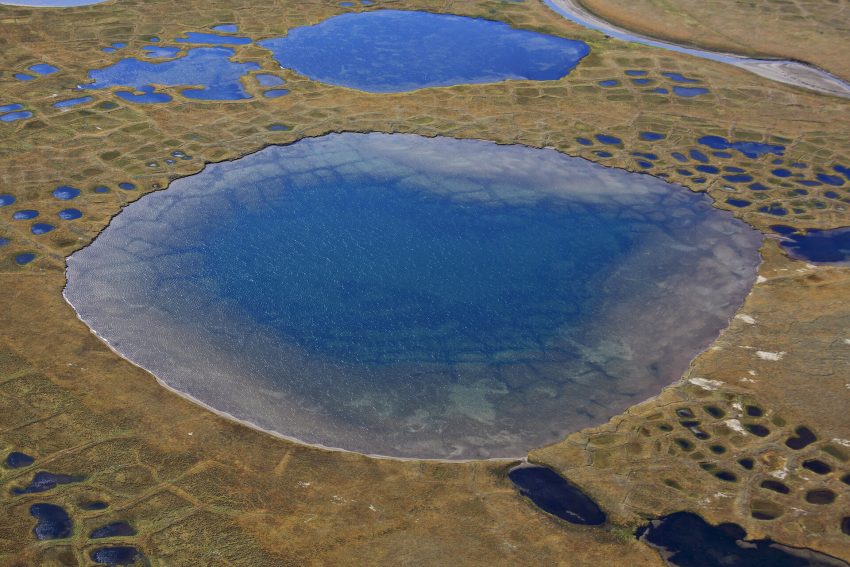Permafrost, an enigmatic and captivating frozen layer of soil, rock, and organic matter, serves as a silent witness to the Earth’s ever-evolving story. Stretching across vast expanses of cold regions around the world, permafrost stands as a testament to the intricate interplay between the frozen and the living. Its presence, hidden beneath the surface, influences the very fabric of our planet’s landscapes and ecosystems.
Within the depths of permafrost, a world of frozen wonders awaits exploration. Its icy embrace holds secrets that have intrigued scientists, environmentalists, and adventurers alike. But permafrost is not merely a picturesque spectacle frozen in time. Its influence reverberates far beyond its icy boundaries, extending into the realms of ecology, climate, and human interaction. Delicate ecosystems have adapted to survive in the extreme conditions of permafrost regions, showcasing nature’s remarkable resilience. Biodiversity thrives in these frigid landscapes, with unique plant and animal species harmoniously coexisting amidst the frozen backdrop. In this immersive journey, we embark on a quest to unravel the mysteries of permafrost and shed light on its profound significance in understanding the Earth’s complex systems.
Understanding Permafrost:

Definition and Characteristics:
Permafrost is defined as ground that remains at or below freezing temperatures for at least two consecutive years. It is characterized by its frozen state and the presence of ice within the soil matrix. We examine the unique properties and composition of permafrost and how it differs from seasonally frozen ground.
Distribution and Climate Influence:
Permafrost is primarily found in polar and high-altitude regions, covering vast areas of the Arctic, sub-Arctic, and Antarctic. We explore the factors that influence the distribution of permafrost, including climate, topography, and vegetation.
Formation and Processes:
Freeze-Thaw Cycle:
We delve into the intricate processes involved in permafrost formation, focusing on the freeze-thaw cycle and the role of freezing and thawing in shaping the landscape.
Ice Wedges and Patterned Ground:
We unravel the mystery of ice wedges and patterned ground, fascinating features that form in permafrost regions due to the expansion and contraction of ice.
Ecological Significance:

Permafrost and Biodiversity:
Permafrost ecosystems harbor unique and diverse plant and animal species that have adapted to the extreme conditions. We examine the delicate balance between permafrost and biodiversity and the potential impacts of permafrost thaw on these ecosystems.
Carbon Storage and Release:
Permafrost acts as a significant carbon sink, storing vast amounts of organic material. We explore the implications of permafrost thaw, including the release of greenhouse gases and its contribution to climate change.
Human Interaction and Challenges:
Infrastructure Challenges:
The presence of permafrost poses significant challenges for infrastructure development in cold regions. We discuss the engineering and construction considerations needed to mitigate the effects of permafrost thaw on buildings, roads, and pipelines.
Indigenous Communities and Traditional Knowledge:
Permafrost plays a vital role in the lives and cultures of indigenous communities. We highlight the close relationship between indigenous peoples and permafrost, as well as the importance of incorporating traditional knowledge in understanding and managing permafrost-related issues.
Future Outlook and Research:
Climate Change and Permafrost Thaw:
We examine the potential impacts of climate change on permafrost and the feedback loop between permafrost thaw and global warming.
Advancements in Permafrost Research:
We explore the latest scientific advancements, including remote sensing techniques, monitoring systems, and modeling approaches, that help us better understand and predict the behavior of permafrost in a changing climate.
Conclusion:
Permafrost, a frozen world beneath our feet, holds secrets crucial to understanding the Earth’s past, present, and future. Its unique characteristics, ecological significance, and interaction with human activities make it a subject of great importance. As we strive to address the challenges posed by climate change, unraveling the mysteries of permafrost and finding sustainable solutions becomes imperative. By exploring and protecting this delicate ecosystem, we can gain valuable insights into our planet’s complex systems and work towards a more sustainable future.

